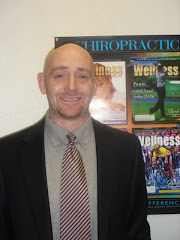During the last quarter-century, holistic healing concepts and complementary therapies have begun to gain acceptance in the West. In 1992, the Journal of the American Medical Association reported that about one-third of all Americans use alternative therapies.
Generally speaking, holistic healing modalities take the entire body system into consideration and treat all levels of being, not just the physical body. Some practitioners prefer the spelling “Wholistic” because healing involves the whole person. Body, mind, emotions and spirit are viewed as inseparable. All affect your health, and all must be considered in the course of treating an ailment.
Holistic healing also targets the subtle bodies and the life force or chi. Although “new” to Western society, complementary healing practices have ancient roots. Acupuncture, for example, has been performed in China for thousands of years. Massage and aromatherapy were popular in ancient Egypt. Herbalism, which is still the primary form of medicine in many parts of the world today, predates written records.
As is true of conventional medical techniques, proficiency in holistic healing requires study and experience. Acupuncture and chiropractic, for example, demand extensive knowledge of anatomy and great skill. Therapies, such as herbalism, can be dangerous if practiced incorrectly. Others, such as homeopathy is rarely harmful – just ineffective if you choose the wrong remedy. To be safe, it is always a good idea to consult a competent professionals rather than attempting to diagnose and treat illnesses yourself.
There are several holistic healing modalities, and each one is a field in itself. Following are brief descriptions of some of the most popular complementary healing techniques.
Acupuncture – uses fine needles and sometimes heat to activate and balance chi. A practitioner inserts needles at certain points along the body’s meridians to remove blockages and harmonize the flow of energy through the body.
Acupressure – activates the flow of chi by applying gentle pressure to the sensitive points along the meridians.
Aromatherapy – primarily refers to healing through olfaction. Some aromatic oils can be rubbed on the skin and absorbed, providing therapeutic benefits in much the same way as other herbal medicines do.
Chi kung – also spelled Qigong, is an ancient Chinese system of promoting health and longevity by harnessing and balancing the vital life force (chi).
Chiropractic – was founded in the late 19th century by B.J. Palmer, and is probably the most widely accepted “alternative” medical therapy used in the West. It involves manually adjusting the spine – to alleviate pain and other physical and emotional problems. Chiropractic has been shown to be effective in relieving ailments ranging from headaches to arthritis.
Herbalism – is one of the oldest forms of medicine, and it is still the most frequently used in many parts of the world. The healing properties of plants may be extracted and utilized in various ways – drunk in tea, as an example. Although many herbs can be taken by most people safely, others can be harmful if used incorrectly.
Homeopathy – was founded by the German physician Dr. Samuel Hahenmann during the late 1700’s, early 1800’s. Hahnemann based his theory on the law of similars, or “like cures like”. A patient is treated with a minute amount of a substance whose effects on the human body are similar to the symptoms the patient is experiencing.
Massage – has been practiced for 5,000 years and was a favorite treatment of Hippocrates. Many different types of massage are popular today for relieving discomforts.
Osteopathy – was devised by an American surgeon name Andrew Taylor Still in 1874. It treats the body’s structure: the skeleton, muscles, ligaments and connective tissue. Osteopaths believe that when one part of your system is out of balance, other parts of your body will be impaired.
Reflexology - refers to massaging the feet and hands to stimulate and balance the flow of chi. This form of massage therapy dates back to ancient Egypt and Greece. Each part of the body corresponds to a spot on your feet or hands.
Visualization – has been popularized by Shakti Gawain and others as way to heal physical and emotional problems. Usually combined with meditation, it involves creating a mental image of a condition you desire that will promote well-being.
Yoga – is thousands of years old. It gained a strong following in the West starting in the 1960’s. Yoga combines physical movement with mental relaxation and deep, rhythmic breathing to produce overall health.
Aside from these therapies, there are the Chakras. Chakra is a Sanskrit term meaning wheel. To psychics and others, these nonphysical energy centers resemble spinning wheels located roughly along the spine. Even if you can’t see them, you may be able to sense their presence in your own body. When the chakras become blocked or don’t operate properly, illness occurs. Health and happiness result when the life force flows freely through the chakras.
There are several chakras along the body. Each one corresponds to a color of the visible spectrum and a note of the musical scale. Therefore, chromotherapy – using colors for healing, and sound healing can be particularly effective in chakra work.
(THE CARE AND FEEDING OF YOUR CHI, 2004, pp48-63. Reprinted with permission by the author: Skye Alexander.)
Thursday, March 12, 2009
Subscribe to:
Post Comments (Atom)



No comments:
Post a Comment